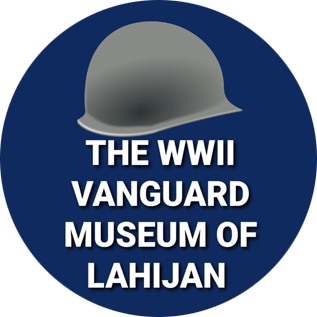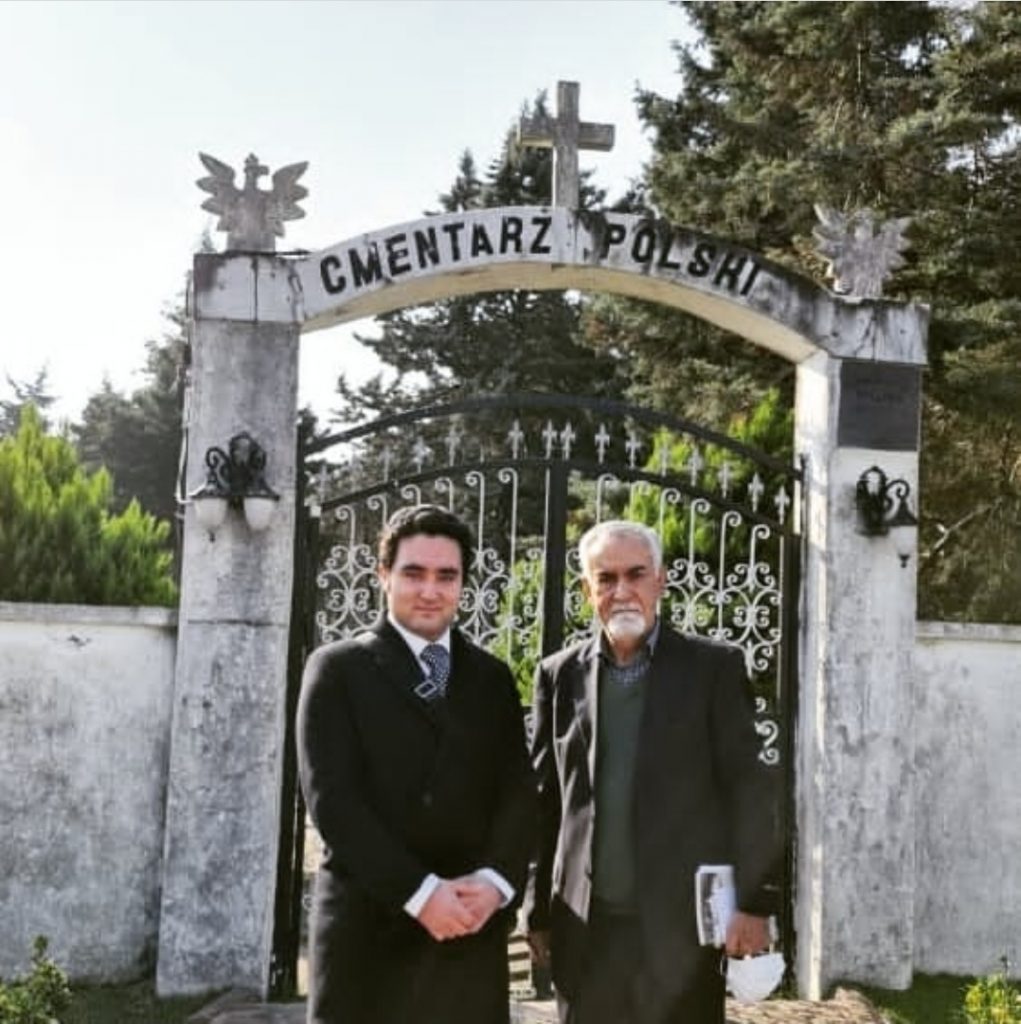
Polish cemeteries in Iran
In 1942, approximately 120,000 Polish refugees arrived to Iran. The refugees were part of a larger exodus of between 320,000 and a million Polish evacuees who were forced out of Poland by the Soviet Union during the war and deported to the eastern parts of the Soviet Union Siberia. With the assistance of Anders’ Army, approximately 120,000 Polish evacuees left the Soviet Union to Iran where they awaited to emigrate to Palestine, Australia, New Zealand, South Africa, United Kingdom, United States and elsewhere. It was the largest migration of Europeans through Iran.from 2021 onwards the WWII Vanguard museum manager Caren Omidi made visits to Polish cemeteires in Anzali, Gilan and in Isfahan. the Iran room in the WW2 Vanguard museum speaks of these sectors.
Ambassador of Italy visits the WWII
Vanguard museum of Lahijan
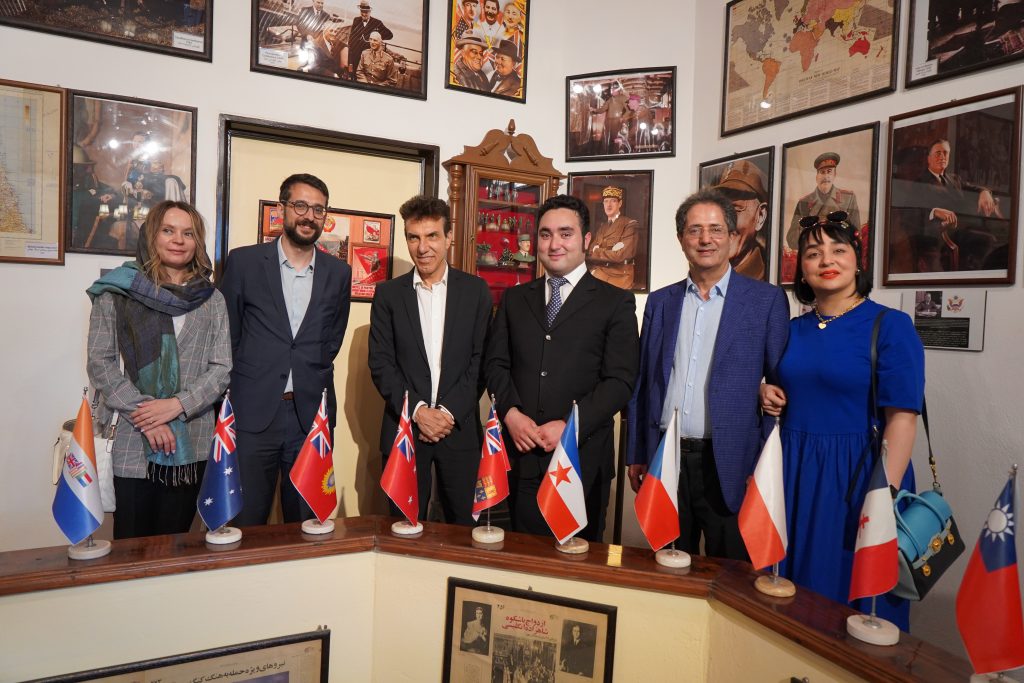
July 16th 2023 Mr. Guiseppe Perrone ambassador of Italy in Iran visited the WWII Vanguard museum of Lahijan. During this visit, Caren Omid, founder of the first private WW2 museum, explained the role of Italy and Iran in the Second World War, as well as the connection of Polish immigrants to Iran who later participated in the Battle of Monte Cassino, Italy. The ambassador also visited different parts of the museum, including the Western Allied Room, the Axis Room, the Soviet Room, the Iranian Room, the library, the movie theater and the weapons room. Documents related to Iran during the occupation, in addition to military uniforms, equipment of soldiers on the battle front, various types of old weapons and many other items are on display. Expressing his surprise at the quality of the content and historical documents and objects of the Museum, the Italian ambassador considered this museum important as a cultural place to attract tourists and researchers.
The Hungarian Ambassador in Iran visits
The WW2 Museum of Lahijan
December 2023
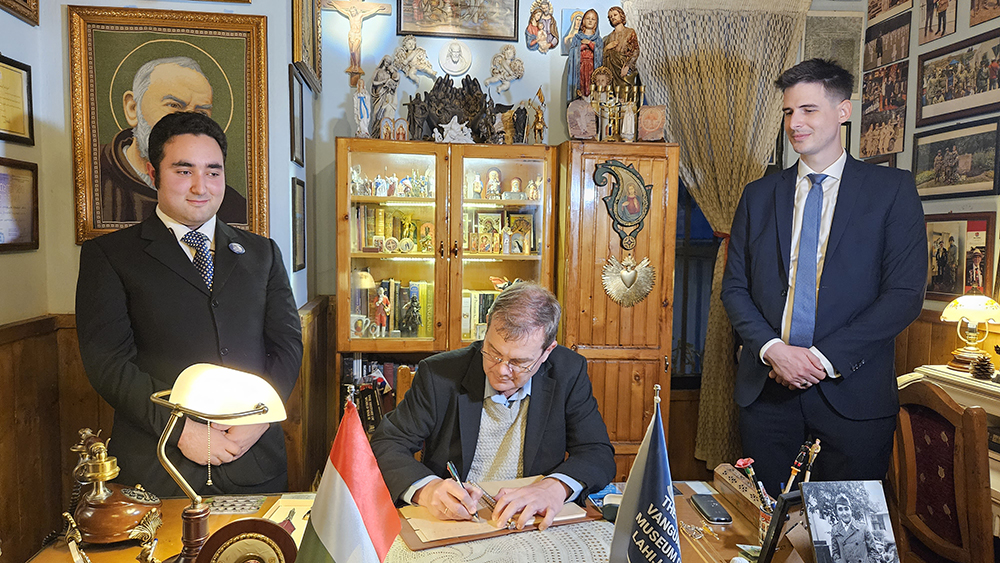
On December 19 2023 The Hungarian ambassador in Iran
H.E.E Mr. Zoltan Varga-Haszonits visited The WW2 Vanguard Museum of Lahijan.
The visit and meeting resulted in talks about the role of Iran and Hungary during WW2 and a connection between Lahijan and Hungary which was regarding a Hungarian diplomat named Istvan Kakas who was sent to Iran during the 1600s and died in Lahijan due to a disease.
Inauguration of the Kakas Memorial
The Hungarian memorial in Lahijan
(A non ww2 but historical memorial)


On a solemn occasion graced by the presence of distinguished guests and dignitaries, including His Excellency Zoltán Varga-Haszonits, the Hungarian Ambassador to Iran, the WWII Vanguard Museum of Lahijan proudly unveiled the Kakas Memorial. The unveiling of the Kakash memorial at Lahijan’s World War II Museum marked a poignant moment in history, witnessed by esteemed guests including H.E. Mr. Zoltan Varga-Haszonits, the Ambassador of Hungary, and Dr. Vali Jahani, the Director General of the Cultural Heritage Department of Gilan Province. On the evening of Tuesday, March 15th, Lahijan bore witness to the commemoration of a Hungarian historical figure, shedding light on a forgotten chapter of its past. In his remarks during the ceremony, Caren Omidi, the director of the World War II Museum, recounted the journey of Estifan Kakash and his delegation in the early 17th century. Commissioned by Rudolph II of the Holy Roman Empire, Kakash and his companions embarked on a mission of unity and friendship between the Holy Roman Empire and Safavid Iran. Their arduous journey led them through Poland, Lithuania, and Russia, until they reached the shores of Gilan, entering through the Langrod wharf and finding solace in the home of Lahijan’s ruler, Mohammad Shafi . According to historical documents from the book “Iterpersicum,” Lahijan was plagued by a deadly disease during Kakash’s stay, resulting in the demise of him and his delegation. Unable to be buried in the Muslim cemetery, they found their final resting place beneath a towering tree within the ruler’s abode, a testament to the shared history between Hungary and Iran. This previously overlooked part from Lahijan’s history was first brought to light by Mr. Shabanzadeh, and its historical significance sparked the initiative to erect a memorial for Kakash, aligning with the museum’s mission to engage both local and international tourists. Dr. Jahani, in his address, highlighted the significance of Lahijan’s World War II Museum as a prominent cultural destination, capable of capturing the attention of visitors from around the world. He expressed readiness for future cultural collaborations between Gilan Province and Hungary, such as hosting various exhibitions. Additionally, Ambassador Varga-Haszonits noted the striking similarities between Gilan Province and Hungary during his visits to Iran, underscoring the importance of the Kakash memorial in promoting peace and friendship between nations, despite its wartime context. At Lahijan’s World War II Museum, documents, artifacts, and exhibits related to war are displayed, captivating both domestic and foreign tourists alike.
The Indian Ambassador in Iran visits
The WW2 Museum of Lahijan
September 2024
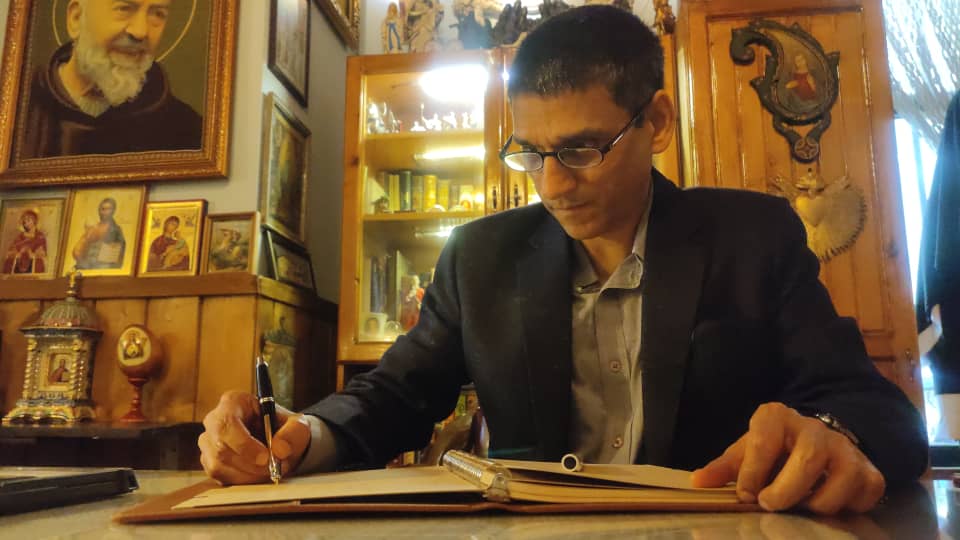
In September 2024 H.E Ambassador Rudra Gaurav Shresth, the Indian ambassador to Iran visited The WWII Vanguard Museum of Lahijan.

The Hungarian Ambassador in Iran visits
The WW2 Museum of Lahijan
April 2025
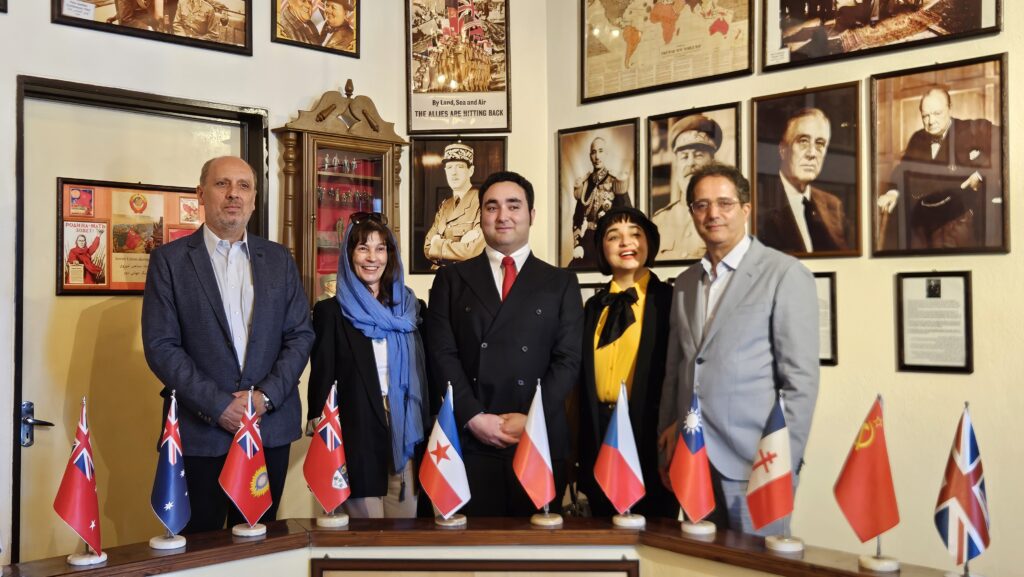
On April 19, 2025, the WWII Vanguard Museum was honored to host H.E. Mr. Gyula Pethő, Ambassador of Hungary to Iran. The visit marked a memorable occasion for the museum, highlighting the power of history to foster dialogue and connection across nations. During his tour, Ambassador Pethő explored the museum’s exhibits and engaged in meaningful conversations about the shared experiences and historical ties between nations during the Second World War. A particularly poignant moment was the ambassador’s visit to the Kakas Memorial, a symbol of remembrance that resonated deeply with both the guest and the museum team. The museum expresses its sincere gratitude to Ambassador Pethő for his visit and interest, which served as a reminder that the legacy of WWII continues to bridge generations and geographies.
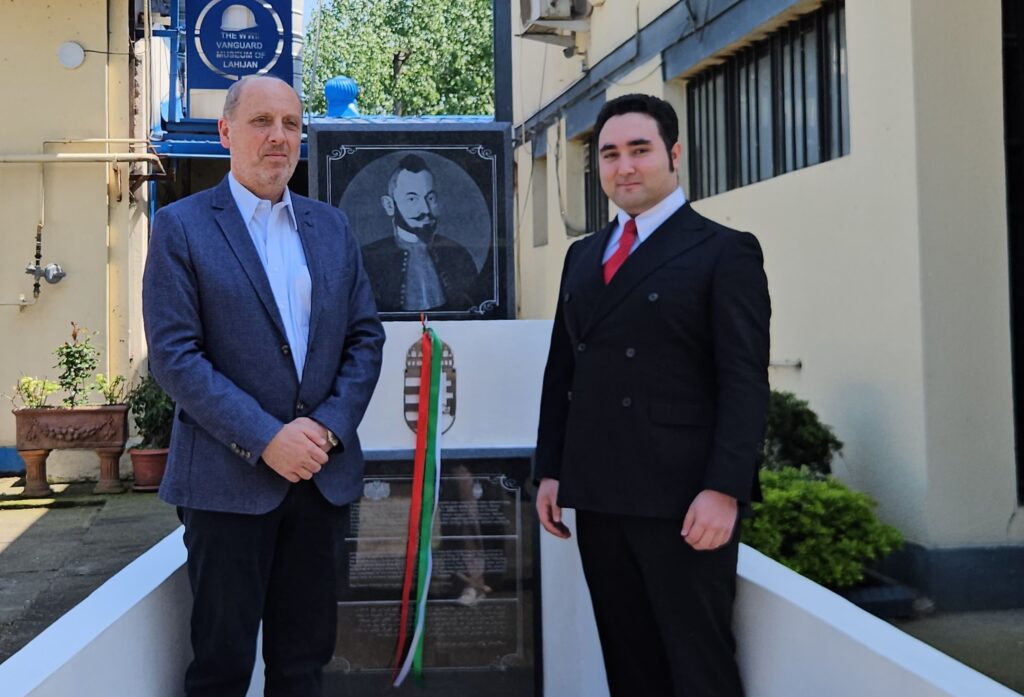
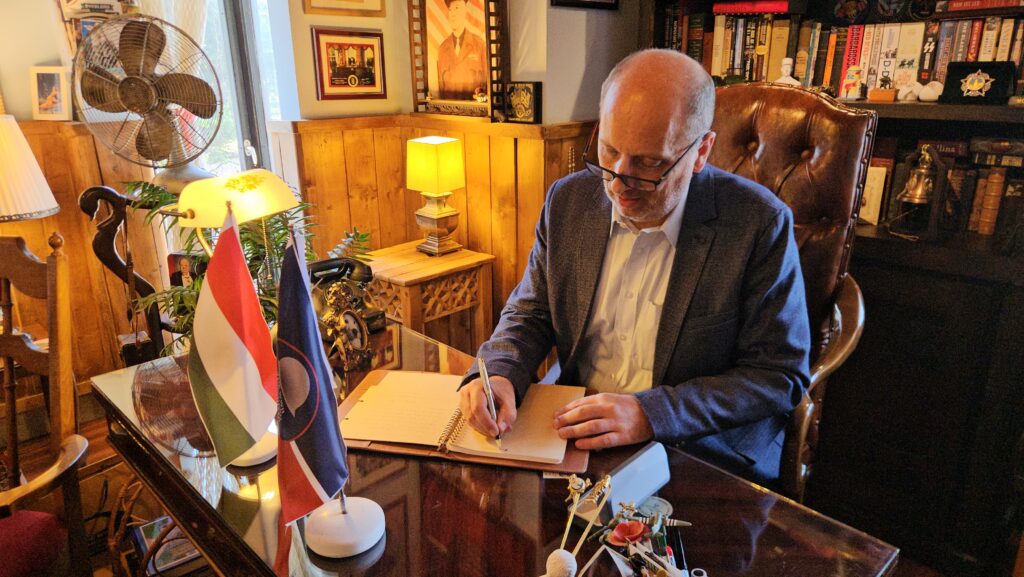
The Swiss Ambassador to Baku, Azerbijan visits
The WW2 Museum of Lahijan
April 2025

On April 21, 2025, the WWII Vanguard Museum in Lahijan proudly welcomed H.E. Mr. Thomas Stähl, Ambassador of Switzerland to Azerbaijan, during his visit to Iran. The ambassador explored the museum’s extensive collection with genuine interest, engaging in thoughtful discussions on the enduring importance of World War II remembrance and the role of cultural preservation. Throughout the tour, Ambassador Stähl reflected on the global scope of the war and its far-reaching impact, highlighting the value of historical education in today’s world. The museum was honored to present the stories and artifacts that contribute to a deeper international understanding of this pivotal era. His visit represents another meaningful step in promoting cultural dialogue and international exchange through the lens of shared history.
The 84th anniversary of the occupation of Lahijan during WW2
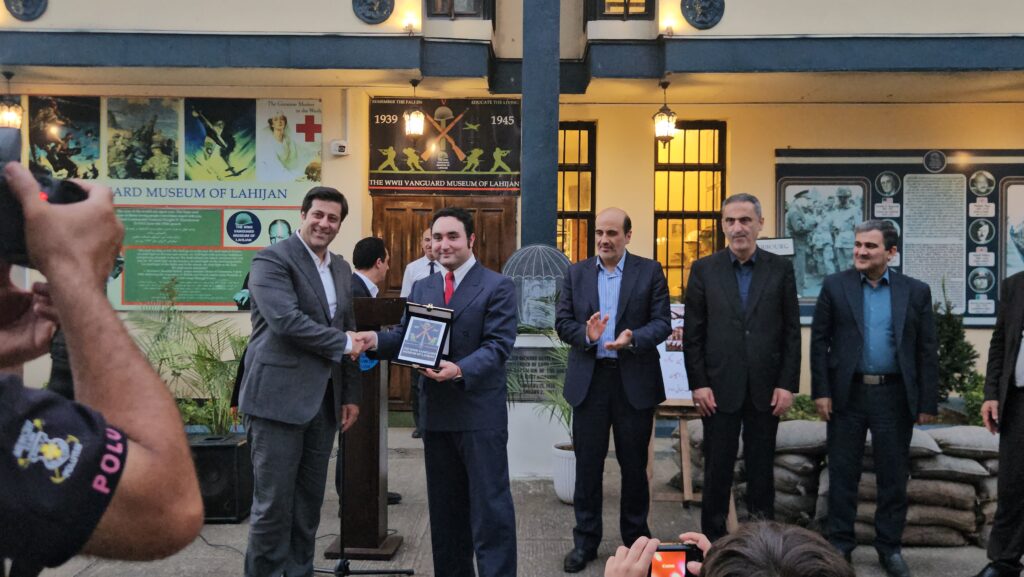
The World War II Museum of Lahijan, in partnership with the Municipality of Lahijan, marked the 84th anniversary of the Soviet bombing of the city on August 29, 1941. This solemn commemoration honored the citizens who lost their lives and highlighted Lahijan’s place in the global history of the Second World War. The program opened with a municipal music ensemble, followed by remarks from Museum Director Caren Omidi on the importance of educating future generations about Lahijan’s wartime experience. Historian Dr. Ali Amiri, author of Black Friday of Lahijan, provided a detailed account of the 1941 bombing, while Mayor Mr. Zendeh-Del underscored the city’s enduring cultural and historical significance. Dr. Bijan Abbasi, Deputy for Constitutional Affairs, reflected on how both world wars shaped Iran’s political landscape. Poet Mr. Nader Zakipour brought a poignant cultural note with a war-themed poem, accompanied by two traditional Gilaki songs performed by Mr. Farzin Nejad. Survivor Mr. Gholam Ghodsi—one of the last living witnesses of the bombing—shared his memories, and two descendants of wartime families presented meaningful donations to the museum: a fragment of a bomb from Mr. Deljou and a mathematics notebook belonging to the late Reza Mahyar, killed in the 1941 attack. The ceremony concluded with a visit to the museum by the mayor and city officials, reaffirming Lahijan’s commitment to preserving the memory of its World War II history for generations to come.

